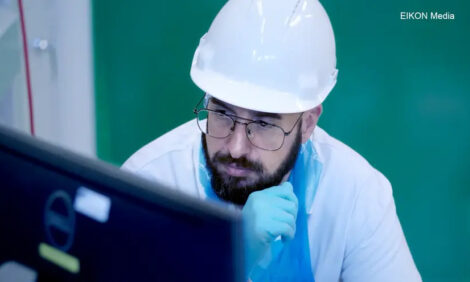



Practical Aspects of Artificial Insemination
By Murray Pettitt, Research Scientist-Contract Research Services, Praire Swine Centre - During the last decade, the use of Artificial Insemination (AI) has become common as producers wish to realize the benefits of AI within their herds.
Summary
Among others, these benefits include the use of genetically superior boars, a reduction in disease transmission and lowered boar housing costs.
Careful attention to detail is required to successfully use AI in a production system. A successful AI program depends on effective heat detection, proper hygiene, correct handling and storage of insemination doses, and proper insemination technique.
Listed below are a few areas that can be trouble spots for a swine AI program and should be monitored closely.
Temperature Fluctuations
Temperature changes are harmful to boar sperm and must be avoided. Cold shock is a rapid decrease in the temperature of the sperm from its current temperature and heat shock is a rapid increase in the temperature of the sperm from its current temperature. These sudden changes are very detrimental to the health of the sperm. Examples of cold and heat shock would be placing a tube of extended semen that was stored at 17°C on top of a window ledge, counter or penning in the winter or on top of a heated window ledge in the summer. Insemination doses must also be protected from cold or hot drafts in the barn as these can also damage the sperm. These drafts are often around fans and doorways.
In order to prevent temperature changes in semen doses while inseminating, the doses should be removed from the 17°C storage cabinet and placed into a plastic cooler. This cooler is then used to transport and store the semen in the breeding barn. The temperature of this cooler should be stabilized by placing two or more gel ice packs in it that were also stored in the 17°C storage cabinet. This will maintain an even temperature in the cooler that is safe for the sperm. Due to the risks of cold and heat shock, each insemination dose should not be removed from the cooler in the barn until just before it is needed for insemination.
Multiple small changes in temperature and reversal of the direction of temperature change of a semen dose are also harmful. For this reason, only the number of doses that will actually be used for insemination should be removed from the 17°C storage cabinet and placed into the plastic cooler to be taken out to the sows. When the insemination doses are moved from the 17°C storage cabinet to the plastic cooler, they will slowly begin to warm up, even though gel ice packs that were stored in the 17°C storage cabinet were placed in the cooler with the sperm. If some of the doses are not used for insemination and are returned to the 17°C storage cabinet, they will cool to 17°C. This reversal of temperature change should be avoided.
The use of storage cabinets and portable coolers to control the temperature of the extended semen has an additional benefit. Ultraviolet light can also damage the sperm and these containers minimize the exposure to these harmful rays.
Inseminator Fatigue
Inseminator fatigue occurs when a breeding technician inseminates too many animals in a short time period. After 10 consecutive inseminations/technician, farrowing rates begin to drop. A good target is for 7-8 inseminations/technician/hour with each insemination taking 5-7 minutes. A short break should be scheduled after every hour. This can be accomplished by loading the plastic cooler with no more doses than can be inseminated in an hour. At the end of the hour, the technician receives a break from inseminating by having to return to the 17°C storage cabinet to pick up more doses and fresh gel packs. This also helps to avoid the multiple small changes in temperature and reversal of the direction of temperature change of a semen dose previously described.
Heat checking and Insemination Timing
While heat checking in the presence of a boar, a sow in standing heat will exhibit the standing reflex for 10 – 15 minutes following stimulation. For the following hour or so, she will not stand again, even in the presence of a boar. Care must be taken to avoid having the boar too far ahead of the AI technician while heat checking and breeding. If the boar is too far down the sow line the sows will be stimulated too early, when the breeding technician cannot observe for estrus. Sows in heat may then not be showing signs of estrus by the time the technician reaches them. This can result in incorrectly determining a sow is not in heat, even though she is. Restricting access by the boar to just a few sows ahead of the one currently being inseminated by using gates or boards will greatly reduce the chance of a sow becoming refractory to additional stimulation and missing her heat.
Moving sows following insemination
If sows must be moved following breeding, move either during the first 3 days after breeding or after the 30th day of gestation. The period between days 3 and 30 is the period of embryo migration and implantation; moving sows during this time may result in spontaneous abortions and/or reduced litter sizes.
Take Home Messages
Changes in temperature of extended semen can be minimized by keeping the insemination doses in plastic coolers with 17°C gel freezer packs while in the breeding barn.
Avoid inseminator fatigue by taking only those doses that can be inseminated in an hour into the breeding barn.
While heat checking, avoid stimulating sows too early as they may become refractory to boar stimulation and the estrus may be missed.
Do not move sows between day 4 after breeding and day 30 of gestation.







